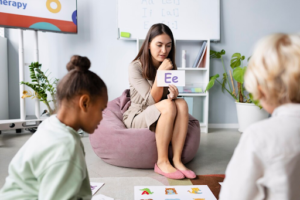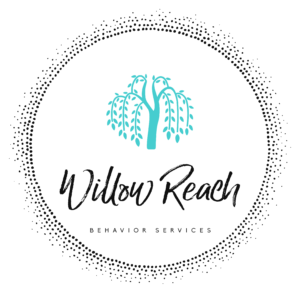Do you find yourself needing to ask the question, “Am I doing everything I possibly can to support my child with their own needs?”
Attempting to make yourself an expert on the whatnot of autistic treatments is completely overwhelming, to say nothing of attempting to interpret what is best for your own child. It’s a journey of questioning, hopes for the future and the ever-present desire to watch your child succeed.
Applied Behavior Analysis, or ABA, treatment has been an actual big gun for years in terms of addressing children with autism.
Research, indeed, has demonstrated that early intensive behavioral interventions can lead to broad generalization in the improvement of communication, social competence, and adaptive behavior. Yet where more aid is needed from children, the setting in which treatment is received comes into vital significance.
Center-based ABA therapy provides a stable, productive-like routine environment that can be wonderfully helpful for some of those more challenging children.
Consistency and being able to work with practitioners who actually do know what they are doing, center programs provide the best situation where children truly thrive and observe improvement. And naturally, playmates to play and socialize with mean a lot too.
Here, we will describe what the advantages of center-based ABA therapy are for the more supported children, and introduce Willow Reach ABA, a center dedicated to providing caring, individualized treatment.
Understanding ABA Therapy for Children with Higher Support Needs
Applied Behavior Analysis is a therapeutic approach grounded in the science of learning and behavior. It focuses on understanding how behaviors work, how they’re affected by the environment, and how learning takes place.
For children with autism, especially those with higher support needs, ABA therapy is tailored to address individual challenges and build essential life skills.
The ABA Therapy Process In A Center-Based Setting
- Assessment: This is a comprehensive evaluation by a Board Certified Behavior Analyst (BCBA) that gets to the bottom line to determine why a child is the way they are and where they may be falling behind and what they need to work on currently.
- Goal Setting: Specific, measurable goals are set from the assessment to inform the therapy.
- Intervention: The therapists implement strategies to train the new skills as well as to intervene in eliminating interfering behaviors which hinder learning.
- Data Collection: Progress on each step is observed through collection of data and thus the intervention, in turn, is regulated accordingly.
- Generalization: Skills learned at therapy are practiced across other situations in a manner such that it might be generalized to the real-world setting.
For children with higher support needs, ABA therapy is more comprehensive in nature and centered on specific communication skills, social interaction skills, self-management skills, and behavior management skills.
The aim is to enable all children to reach their full potential by optimizing the capabilities of every child.

Why Center-Based ABA Therapy Is Ideal for Children Who Need Higher Levels of Support
Although ABA therapy may be conducted in a wide variety of settings, center programs are best for children who need more intensive interventions.
1. Organized Setting
ABA center treatment is actually special and structured in the way that it is specifically geared to maintain spaces distraction-free that actually concentrate people better on learning.
The consistency of this kind is extremely beneficial for children who function well on routine and predictability.
“The tightly organized setting of center-based treatment provides therapists with the opportunity to battle distraction so that children can focus on learning more readily.“
2. Availability of Specialized Materials
Therapies that are done at centers benefit from the specialized equipment and materials that are dedicated to assisting autistic children in developing skills.
This includes sensory rooms, functional visual aids, and equipment that may not always be quite so easily available at home.
3. Professional Expertise
In a center program, the children also benefit from the collective learning of a staff team of BCBAs, therapists, and support workers.
Through the team effort of the staff, the treatment that each child is receiving gets combined and specially formulated to what each child requires.
4. Opportunities for Social Interactions
Centers provide a natural setting in which children are able to play with friends, thus facilitating sharing, turn-taking, and communication skills.
They are professionally led activities in which professionals make things really terrific and grand.
5. Routine and Consistency
Daily routines and schedules of center-based programs soothe children and give them a sense of what is expected of them, all of which assists in learning and avoids anxiety.
6. Generalization of Skills
Learning away from home enables the children to reinforce and apply what they learned in order to adapt and become independent.
7. School Environment Readiness
Center-based therapy is nearly as good as going to school and it can be very beneficial to children. They learn beneficial learning skills that really prepare them for school when they get there.

The ABA Services Provided by Willow Reach ABA
We are dedicated to providing compassionate, individualized ABA therapy services that meet the unique needs of each child and family at Willow Reach ABA. Our services are evidence-based and holistic-person development centered.
In-Home ABA Therapy
- Comfort and Security: It is where children learn best in the comfort and security of home.
- Personalized Learning: Treatment is tailored to your child’s individual needs.
- Family Involvement: Parents are integrated immediately into the treatment center and they acquire new ways of being supportive to the development of their child as a group.
- Integration into Normal Routine: Skills are applied daily, which leads to generalization.

Center-Based ABA Therapy (Coming Soon)
Be on the lookout for the launch of our yet-to-be-launched center-based ABA therapy program that will be adequately served with world-class facilities constructed to offer room for quality and engaging therapy sessions. Our facilities will boast:
- Structured Routines: Daily routine calendar to allow comfort, concentration, and security.
- Less Distractions: A neatly arranged ambiance where children can concentrate on acquiring skills and learning.
- Therapist Partnership: Experienced professionals collaborating today to offer unobstructed, joined-up care hand in hand.
- Peer Interaction Opportunities: Organized group sessions to facilitate social skills and self-esteem development.
- Specialized Equipment and Learning Areas: From sensory rooms to assistive communication tools, all so and available to aid children to do well and to do good.
Either through in-home ABA therapy services or in our upcoming center, Willow Reach ABA works to achieve real gains for children with high needs with personalized and empathetic care.
Center-Based vs. Home-Based ABA Therapy: A Comparison for High Support Needs
| Feature | Center-Based ABA Therapy | Home-Based ABA Therapy |
| Level of Structure | High – Controlled, distraction-free environment with fixed schedules and routines. | Variable – Depends on household setup, which may include distractions or interruptions. |
| Therapist Collaboration | The on-site team of BCBAs and RBTs allows real-time communication and interdisciplinary support. | Limited to scheduled supervision and occasional in-person BCBA visits. |
| Access to Resources | Full access to specialized learning materials, sensory tools, and behavior tracking tech. | May be limited to portable or basic materials that fit into the home environment. |
| Peer Interaction | Regular opportunities for social engagement with peers through group activities. | Typically one-on-one therapy with limited or no peer interaction. |
| Parent Involvement | Involvement through scheduled updates, training sessions, and collaboration. | Hands-on involvement; parents often observe or participate during sessions. |
| Best Suited For | Children with complex or intensive behavioral needs who benefit from structured environments. | Children with mild to moderate support needs or those transitioning into therapy. |
| Consistency of Environment | Consistent setup designed for optimal learning, regardless of home changes or routines. | May vary based on family routines, space limitations, or changes at home. |
Final Thoughts
Having the right ABA therapy site is a big decision, if your child needs more.
Although home-based and center-based therapies both have their advantages, center-based ABA programs provide that extra level of structure, experience, and social interaction that can be a blessing for children who need more.

At Willow Reach ABA we believe passionately that every single little one must be allowed to blow their own trumpet and let their very own special talents shine through. And that’s why we’re here to be with you every step of the ABA way.
Whether you’re making your very first steps of the ABA path or just looking for that special somebody for your child, we’re always happy to natter, listen, and guide.
Frequently Asked Questions (FAQs)
- What are the indications that my child needs high support ABA services?
Each child along the autism spectrum has their own strengths and weaknesses. High quality ABA treatment services are usually prescribed when a child indeed does have problem behaviors, lots of difficulty with communication, or other significant delays of that sort that need a little more special intervention.
- Is the child able to switch from home to center-based ABA therapy in the long run?
Yes. There are children who start ABA therapy at home as a courtesy to stage-set in an environment in which they are at ease. Older, and yet further along in the years ahead, to transition into a program where the school is made a priority would give them very different experiences of learning augmented by other interventions and enhanced socialization with other young ones.
- Is Applied Behavior Analysis for young children with autism exclusive?
Depending on the age of the child, children below high school most likely will be in communication or daily living skills but older children in job readiness or independent living.
- Is Willow Reach ABA also treating parents and caregivers?
Yes. Being able to incorporate family members into therapy is perhaps one of the best aspects of therapy at Willow Reach ABA. Our treatment clinicians collaborate with the family in a way that techniques in treatment and intervention taught in practice in the sessions can easily be practiced at home and daily activities as well.
- How is Willow Reach ABA’s approach unique compared to others?
What sets Willow Reach ABA apart is our focus on creating a truly personalized experience for each child and family. From matching therapists based on personality and strengths to reducing therapy-related stress in the home, our emphasis is always on compassion, consistency, and joy in learning. Our upcoming center-based services will continue this mission with even more specialized resources and collaborative support.
Want to be inspired and in the know? Follow Willow Reach ABA on Instagram and Facebook for inspiring stories, expert tips, and behind-the-scenes looks at how we empower amazing kids every single day.
